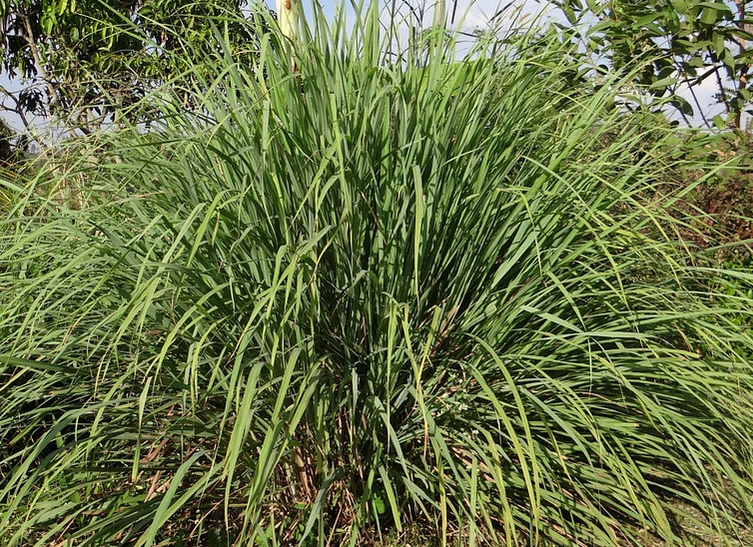Evaluation of the effect of time of cutting on the content of the essential oil of holy grass (Cymbopogon citratus (DC) Stapf)
DOI:
https://doi.org/10.20873/jbb.uft.cemaf.v4n1.mirandaKeywords:
medicinal plants, production of essential oil, harvestAbstract
Plants producing essential oils are influenced by various factors that may affect the amount and chemical composition of the oil. The lemon grass (Cymbopogon citratus) despite being widely used in Brazil has a limited number of studies on the production of essential oil. Its essential oil is highly sought by industry of cosmetics, perfumes and drugs. The challenge for those who cultivate the plants producing essential oils is to know the factors that influence the composition and quantity of oil. The aim of this study was to evaluate the effect of leaf collection schedule on the content of essential oil of lemon grass. The experimental design was a randomized block with three installments, with the treatment the following times cutting: 8:00, 12:00, 16:00, 20:00, 24:00, 04:00 hours. It was found that the leaves of the crop lemon grass should be avoided at noon hours (12:00 hours), for providing the lowest level of the essential oil.
References
AMERICAN OIL CHEMISTS SOCIETY. Official methods and recommended practices. Champaign, 1994.
BLANK, A. F. et al. Influência do horário de colheita e secagem de folhas no óleo essencial de melissa (Melissa officinalis L.) cultivada em dois ambientes.Revista Brasileira de Plantas Medicinais, Botucatu, v.8, n.1, p.73-78, 2005.
COSTA, L. C. B. et al. Secagem e fragmentação da matéria seca no rendimento e composição do óleo essencial de capim-limão. Horticultura Brasileira, Brasília, v.23, n.4, p.956-959, 2005.
EVANS, W. C., Farmacognosia, 13 ed. Nueva Editorial Interamericana, S.A. México, 901p, 1991.
FERREIRA, D. F. Análises estatísticas por meio do Sisvar para Windows versão 4.0. In. 45° Reunião Anual da Região Brasileira da Sociedade internacional de Biometria. UFSCar, São Carlos-SP, p.255-258, 2000.
GONÇALVES, G.G; MANCINELLI, R.C; MORAIS, L.A.S. Influência do horário de corte no rendimento de óleo essencial de alfavaquinha e alecrim. Horticultura Brasileira, 2009.
LEAL, T. C. A. de. B. Produção de óleos essencial de capim cidreira (Cymbopogon citratus (D.C) Stapf) em função de fatores endógenos e exógenos. 62 f. Tese- Doutorado em Produção Vegetal. Centro de Ciências e Tecnologia Agropecuárias, Universidade estadual do Norte Fluminense. Campos dos Goytacazes, Rio de Janeiro, 1998.
MARTINS E.R.; SANTOS, R.H. S. Plantas medicinais: uma alternativa terapêutica de baixo custo. Viçosa: UFV, Imprensa universitária, 26p, 1995.
MARTINS, E.R; CASTRO, D.M. CASTELLANI, D.M.; DIAS, J.E. Plantas Medicinais. Viçosa: Editora UFV, 220 p, 1995.
MELO, J. G. D. ; MARTINS, J.D.G.D.R.; AMORIM, E. L. C.; ALBUQUERQUE, U.P. Qualidade de produtos a base de plantas medicinais comercializados no Brasil: castanha-da- índia (Aesculus hippocastanum L.), capim-limão (Cymbopogon citratus (D.C) Stapf) e centela (Centela asiática (L.) Urban.). Acta Botânica Brasílica. v.21,n.2, p.27-36.2007
MORAIS, L. A. S. Influência dos fatores abióticos na composição química dos óleos essenciais. Horticultura Brasileira, Brasília, v.27, n.2, p. 4050- 4063, 2009.
NAGAO, E. O. et al.Efeito do horário de colheita sobre o teor e constituintes majoritários de óleo essencial de Lippia alba (Mill)N.E.Br., quimiotipo citral-limoneno. Revista Ciência Agronômica, vol. 35, n.2, p.335-360, 2004.
NASCIMENTO, I. B. do. et al.Efeito do horário de corte no óleo essencial de capim-santo. Revista Ciência agronômica, v.34, n. 2, p. 169-172, 2003.
NASCIMENTO, L.B do. et al..Influência do horário de corte na produção de óleo essencial de capim-santo (Andropogum sp). Revista Caatinga. Mossoró-Brasil, v.19, n.2, p.123 - 127, 2006.
SINGH, A.; BALYAN, S.S.; SHAHI, A.K. Cultivation of jammu lemongrass in North India under irrigated conditions. In: ATAL, C.K.; KAPUR, B.M.Cultivation and utilization of aromatic plants Jammu-Tawi, India: Council of Scientific and Industrial Research, p.308-313, 1982.

Published
How to Cite
Issue
Section
License
Copyright (c) 2024 - Journal of Biotechnology and Biodiversity

This work is licensed under a Creative Commons Attribution 4.0 International License.
Authors who publish with this journal agree to the following terms:
Authors retain copyright and grant the journal right of first publication with the work simultaneously licensed under a Creative Commons Attribution License (CC BY 4.0 at http://creativecommons.org/licenses/by/4.0/) that allows others to share the work with an acknowledgement of the work's authorship and initial publication in this journal.
Authors are able to enter into separate, additional contractual arrangements for the non-exclusive distribution of the journal's published version of the work (e.g., post it to an institutional repository or publish it in a book), with an acknowledgement of its initial publication in this journal.
Authors are permitted and encouraged to post their work online (e.g. in institutional repositories or on their website) prior to and during the submission process, as it can lead to productive exchanges, as well as earlier and greater citation of published work (Available at The Effect of Open Access, at http://opcit.eprints.org/oacitation-biblio.html).


